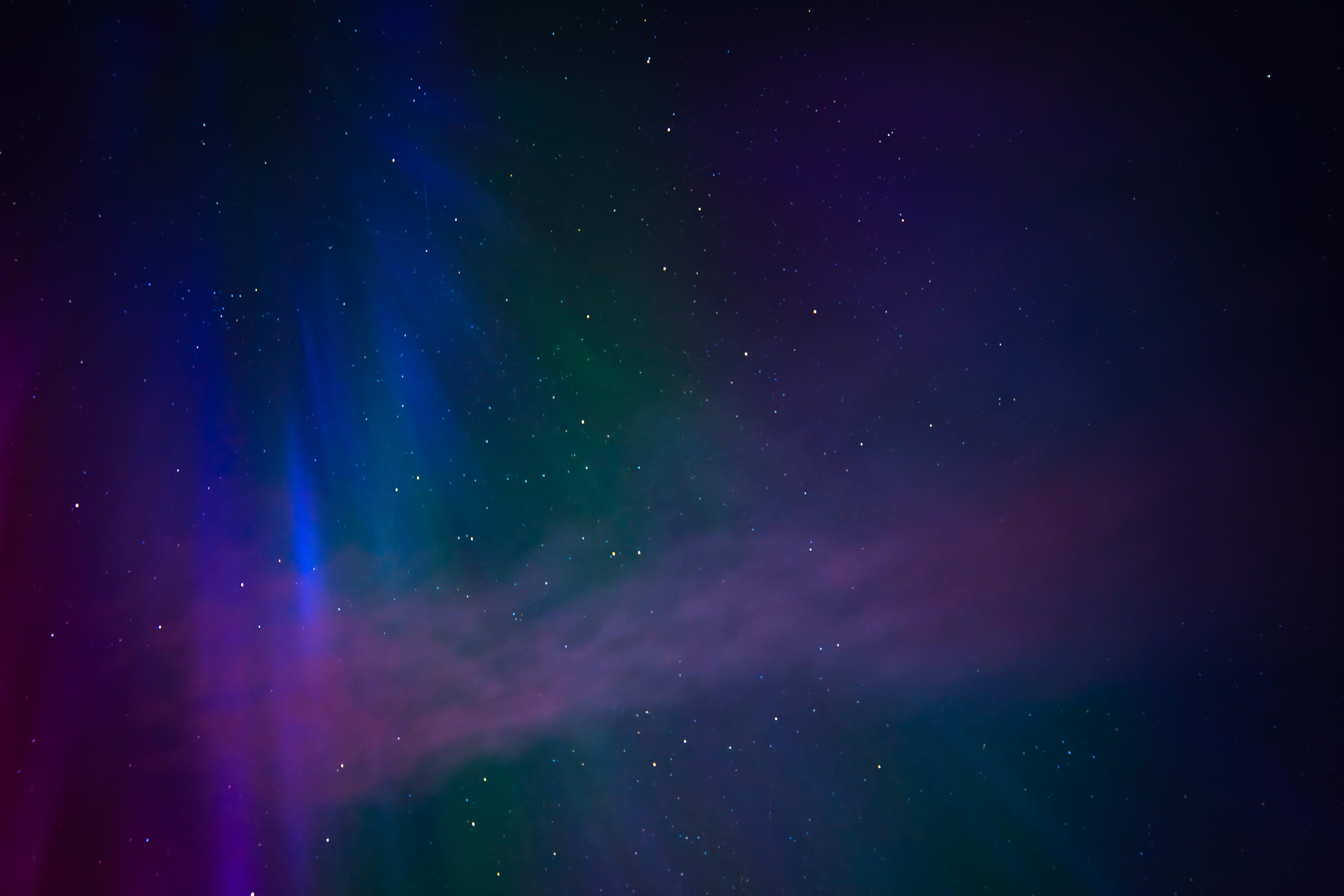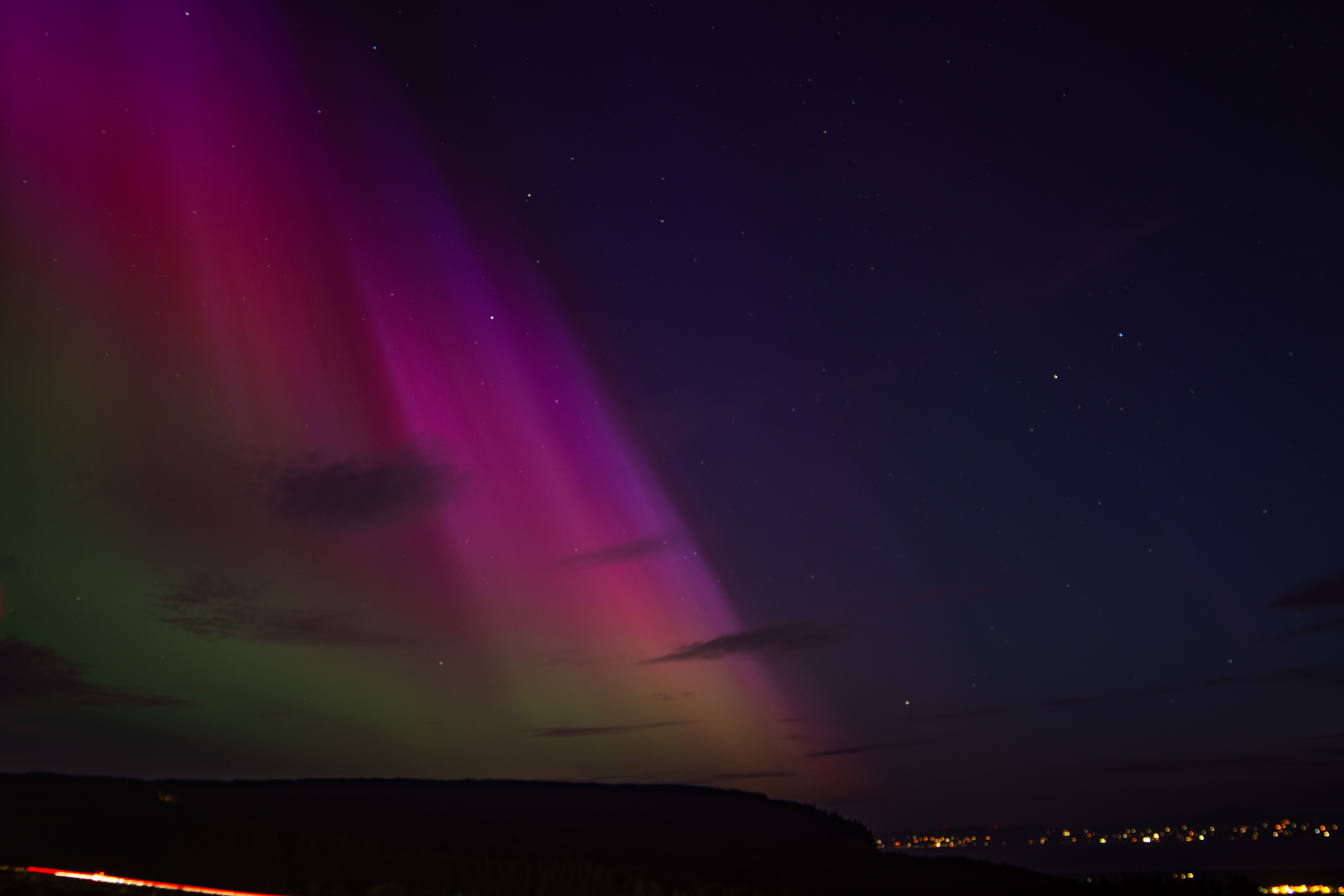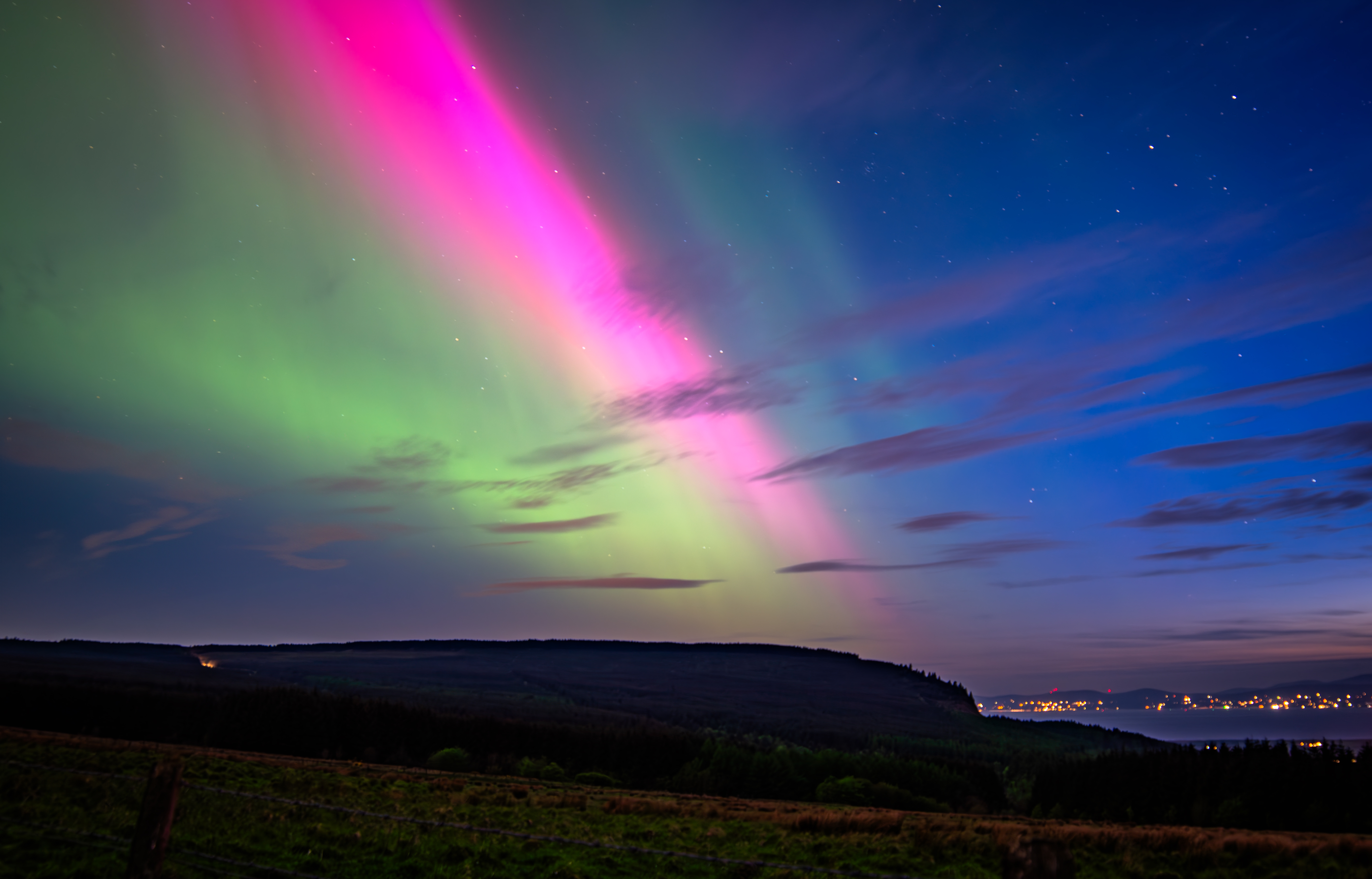The Northern Lights, sometimes called Aurora Borealis, occur when the sun hurls charged particles into space. During events called "solar storms", many more of these particles are produced than normal. When these particles collide with our atmosphere, they produce small flashes of light, that coalesce into something breathtaking.

This produces the now famous glow, which launched a million britons (myself included) to the darkest, highest point they could find on the 10th & 11th of May. The weather was with us and we got to see one of nature's most mysterious phenomenon, but what I found most fascinating was the effect it had on its viewers.
The Overview Effect
Astronauts who looked back at the earth as they were taking off reported a sense of oneness, a kind of perspective on the earth that transcended the divisions on which we place so much importance. This was named the overview effect and I believe I witnessed it at the top of Benevenagh mountain.
People began pondering the distance these particles had travelled, and it led to further, more philosophical questions. What must it have been like to experience this before a scientific explanation was available? Would it have caused fear? Each person speculated and in doing so, betrayed a little something about their views on the human condition.
Watching these conversations emerge gave me another insight. Seeing is believing, but believing isn't always understanding. Belief without understanding is the birth of curiosity.
The Photography
My equipment, being a new photographer, is limited. I have a Nikon D7200. It uses a crop sensor so doesn't get the full range of colours, but it does a good job, and is one of the better DSLRs on the market for low light performance.

The Samyang / Rokinon f/2.8 lens is unmatched at its price point. I picked mine up for $100 used, and I have been able to capture some beautiful shots with it. It has no autofocus, but for astrophotography, you're living in manual mode.
The settings on my camera were relatively straight forward (check the caption for each image), and the strength of the lights meant that this was much more of a "point and shoot" activity. One trick I did utilize was hanging my bag off of my tripod, to ensure it didn't move in the wind, which while mild for Northern Ireland, was noticeable. I also calculated my maximum exposure time using the "500 rule", which gave me a safe length of 20 seconds. Any longer and I'd need a star tracker, which I desperately wished I had.
Something I loved was the bokeh in the distant lights. I think if the whole scene had been perfectly in focus, it would have lost something. The idea of the aurora reaching off into an uncertain distance gives a sense of the enormity of the scene. It was something I aimed for while taking the shots, but truth be told, I struggled to know if I'd got it right until I was home.
Editing
Editing was simple. Increase exposure and brightness to bring out the colours. Then alter contrast, clarity and dehaze to sharpen the image, before using Photoshop's excellent AI driven noise reduction to clean up the static. I was even able to bring out some of the details in the nearby hills, without too much loss of detail, although in this last photo, you can see the presence of some star trails, so a lesson learned is to always play it safe.

